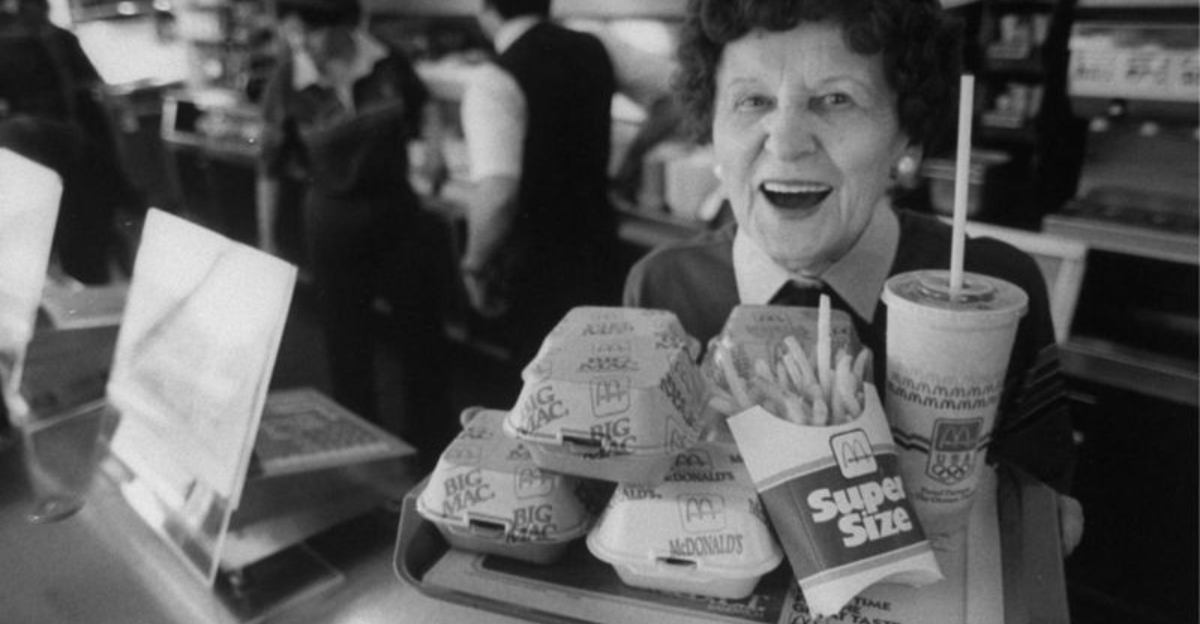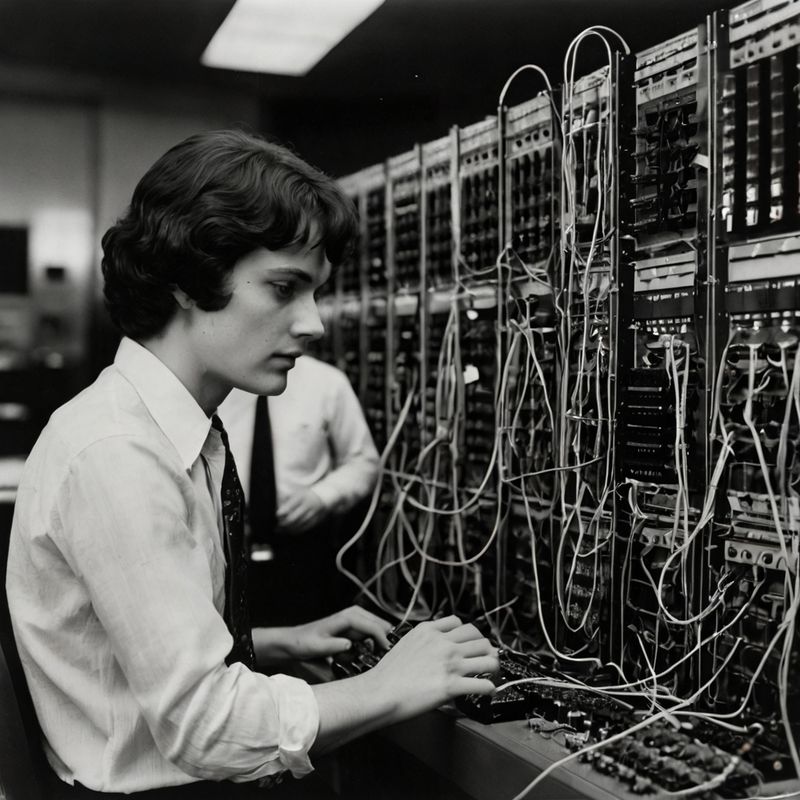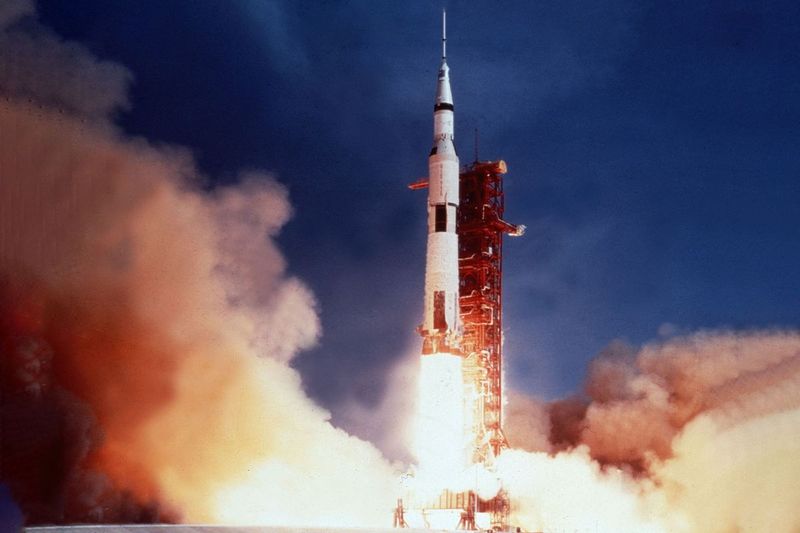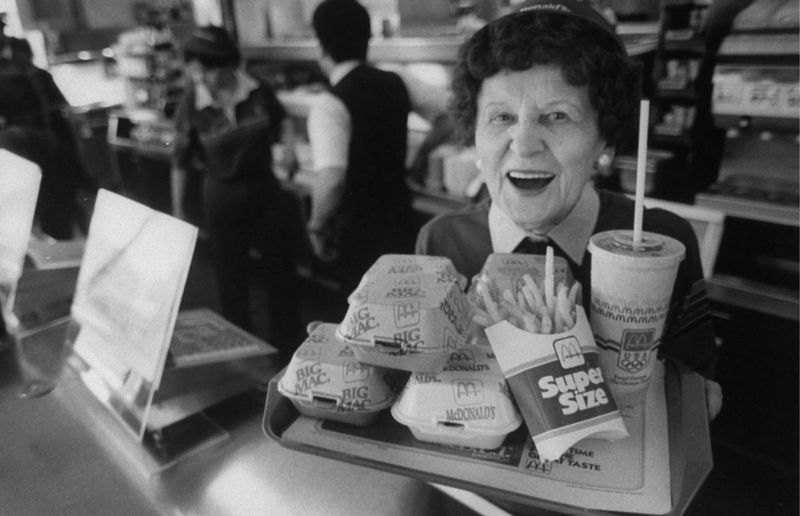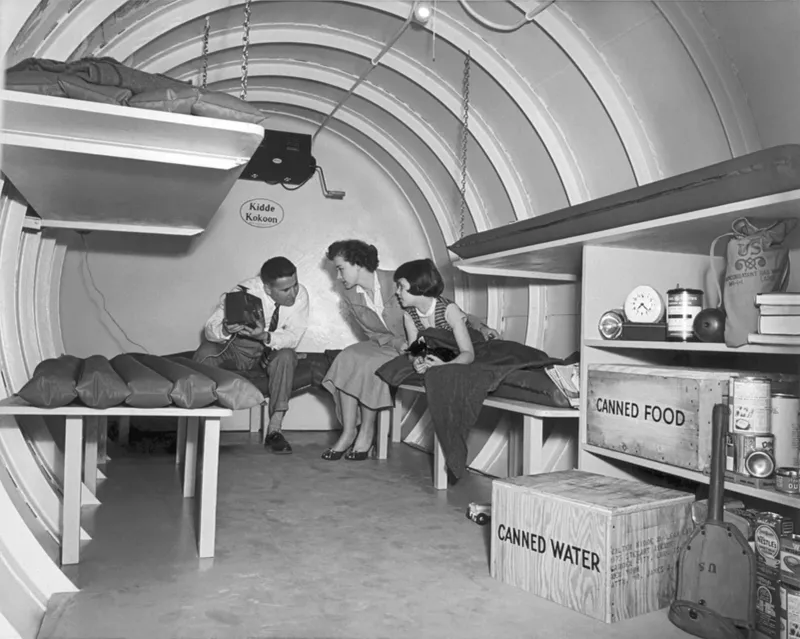The Cold War wasn’t just a geopolitical standoff—it quietly influenced the way we live, work, and even eat. Here are 12 everyday things shaped by the U.S.-Soviet rivalry.
1. The Internet’s Beginnings
Fear of a Soviet attack led to the creation of ARPANET, the precursor to the internet. The U.S. wanted a communication system that could survive a nuclear strike. This innovation evolved into the digital world we rely on today.
ARPANET’s development was a collaborative effort among scientists. They envisioned a network that would connect computers across various universities and research institutions.
Today, we take for granted the connectivity the internet provides. It’s hard to imagine a world without instant communication. Yet, it all started as a Cold War strategy. The internet forever changed global communication and commerce.
2. NASA and the Space Race Boom
The Cold War fueled the race to the moon, giving us everyday tech like satellite TV, GPS, and memory foam mattresses. NASA’s innovations were not just about reaching space. They had practical applications down on Earth too.
This era marked an explosion in technological advancements. It propelled us to dream bigger and reach further. The rivalry spurred unprecedented funding and focus on aerospace research.
Even today, spinoffs from NASA’s work continue to shape our lives. From better insulation materials to improved safety equipment, the Space Race left a legacy that extends well beyond its original goals.
3. Microwave Ovens in Every Kitchen
Microwave technology was refined during the Cold War as part of radar research. Eventually, it made its way into homes, changing how we cook forever. The convenience of reheating meals quickly became indispensable.
The microwave oven revolutionized food preparation. No longer did meals require hours of cooking. Instead, families could enjoy hot meals within minutes. It’s hard to imagine a modern kitchen without this appliance.
The microwave symbolizes the era’s push for technological convenience in everyday life. Initially a luxury, it soon became a staple, reflecting broader societal shifts towards efficiency and speed in domestic life.
4. The Rise of Fast Food
McDonald’s and other fast-food chains expanded rapidly, symbolizing American capitalism and convenience. The government even backed frozen food and canned goods during wartime.
This era saw a surge in fast food’s popularity. The simplicity and speed appealed to busy families and workers. Fast food became a cultural icon in the U.S. It represented more than just a meal; it was a lifestyle.
The Cold War era’s influence extended into culinary habits. The rise of fast food reflected a society on the go, seeking quick, affordable dining options. It left a lasting impact on global food culture.
5. The Birth of Fitness Culture
Cold War tensions pushed the U.S. to focus on physical fitness after studies showed American kids were less fit than their Soviet counterparts. This led to the rise of school fitness programs and gym culture.
The government emphasized physical education in schools. Fitness became a national priority. Public campaigns encouraged exercise as a patriotic duty. It cultivated a new awareness of health and wellness.
This era laid the groundwork for today’s fitness industry. From workout routines to gym memberships, it all traces back to the Cold War’s influence. The focus on fitness became a lasting cultural phenomenon.
6. Secret Spy Gadgets Now Used in Everyday Tech
Miniature cameras, encrypted messaging, and early versions of GPS were originally developed for espionage. These technologies later became standard in consumer tech. The Cold War era was marked by innovation in surveillance tools.
Many of these devices found civilian applications. The need for secrecy and intelligence drove rapid technological progress. As espionage evolved, so did the capabilities of these tools. Eventually, they were adapted for everyday use.
Today, technology like GPS is integral to modern life, guiding us in daily activities. Spy gadgets from the Cold War era continue to influence the technology we rely on.
7. Widespread Air Conditioning
The U.S. pushed AC development to keep military bases and data centers cool in hot climates, making the technology more affordable and widespread. Air conditioning became essential for comfort and productivity.
It transformed living and working environments. What was once a luxury became a necessity. The availability of AC reshaped architectural designs and urban planning. It enabled population growth in hotter regions.
The Cold War era’s focus on technological advancement extended to improving everyday comfort. Today, air conditioning is a standard feature in homes and offices. It illustrates how military-driven innovation found its way into civilian life.
8. Suburban Boom and Car Culture
Fears of nuclear war led to the growth of suburban living, as people wanted to escape city centers. This also fueled the rise of car culture and the interstate highway system. The suburbs offered a perceived sense of safety and community.
Car ownership became synonymous with freedom and mobility. The Cold War era’s anxiety influenced urban development and transportation. Families flocked to suburbs, driven by the desire for security and space.
The interstate system facilitated this movement. The boom in suburban living highlighted a shift in lifestyle preferences. It changed the American landscape, both socially and geographically.
9. Doomsday Bunkers & Fallout Shelters
During the Cold War, many families built fallout shelters. The idea of “prepping” for disaster took hold, a mindset that still influences survivalists today. These shelters reflected widespread fear of nuclear conflict.
Preparedness became a cultural norm. People stocked bunkers with food and essentials. The Cold War era’s influence on emergency planning was significant. It instilled a lasting awareness of potential crises.
This mindset persists in modern survivalist movements. Bunkers and shelters symbolized the era’s pervasive anxiety. They serve as a reminder of a time when nuclear threat was a real possibility. Today, the legacy of preparedness continues.
10. Pop Culture & Spy Thrillers
The Cold War gave us James Bond, classic spy novels, and countless movies about espionage, paranoia, and nuclear threats. Even today, the spy genre thrives. This era’s influence on pop culture was profound.
Spy thrillers captivated audiences with tales of intrigue and danger. Fictional spies became cultural icons. The Cold War provided rich material for storytelling. It inspired a genre that remains popular.
The themes of secrecy and suspense continue to resonate. Spy media from this time entertained and reflected societal tensions. The genre’s enduring appeal highlights the lasting impact of Cold War narratives on entertainment.
11. Medical Advancements & Polio Eradication
The U.S. and Soviet Union cooperated in developing and distributing the polio vaccine, showcasing how Cold War competition also led to global health breakthroughs. This collaboration highlighted a rare moment of unity.
The fight against polio demonstrated the potential for positive outcomes amidst rivalry. Medical advancements were a bright spot in an otherwise tense period. The success of the polio vaccine campaign showed the power of science.
It underscored the importance of international cooperation in health. This achievement had a lasting impact on global public health. The legacy of Cold War-era medical progress continues to benefit society.
12. The Push for STEM Education
When the Soviets launched Sputnik, the U.S. responded by emphasizing science and math education. This Cold War-era push helped shape today’s focus on STEM careers. The launch of Sputnik was a wake-up call.
It sparked a surge in educational reform. Schools prioritized science and technology to catch up with Soviet advancements. This focus on STEM subjects laid the foundation for future innovation.
The emphasis on education reshaped academic priorities and opportunities. It inspired generations of scientists and engineers. The Cold War’s impact on education is evident in today’s technological landscape, underscoring the lasting importance of these initiatives.
